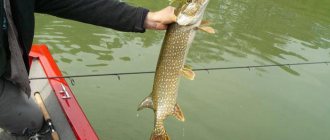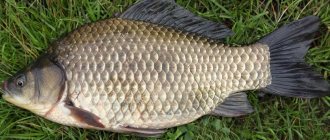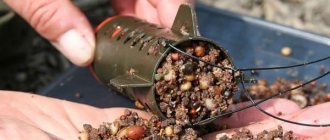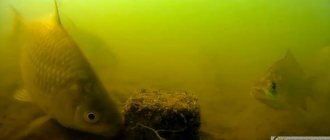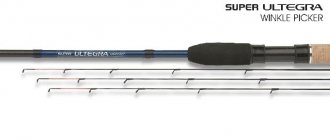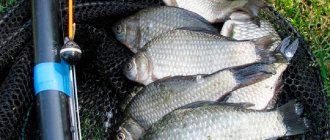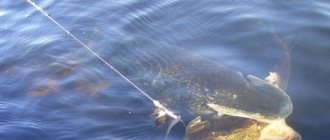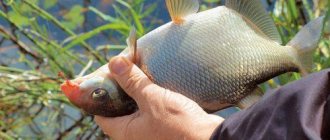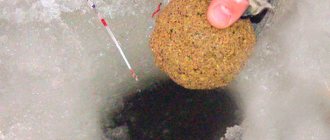The right bait for crucian carp in the spring is the key to successful fishing. The variety of tastes of this silvery gourmet is known to fishermen. And in the spring, the choice of bait is also influenced by seasonal features - the transition of fish from the passive stage of feeding to the active stage, and then to spawning. In this article we will look at what to catch crucian carp with in the spring, what baits and baits to use on various gears. The main object of fishing now is silver crucian carp (hybrid, dushman), however, the recommendations are also suitable for catching its golden brother.
What do crucian carp bite on in spring?
The capriciousness of crucian carp in biting is known. However, if you dig deeper, silver is not fussy at all. On the contrary, it greedily and eats a lot in the reservoir what it can find - bloodworms, larvae of aquatic insects, elements of phytozooplankton, eggs and even fry. The crucian carp does not eat everything at any given time. It eats a specific object, and the feeding pattern differs among different flocks. That is why during one fishing trip it can peck first on one bait, then on another. Most likely, another flock has approached the point, and the next bait works better on it.
It is impossible to say unequivocally what smells crucian carp like in the spring. In natural reservoirs at the beginning of spring it is better to use natural aromatics and animal components in baits and baits. On pay zones and reservoirs frequently visited by fishermen, the silverfish may respond better to chemicals or some specific aromas - this is how it has adapted; a lot of different feeds and baits, boilies and pellets are constantly flying into the water. It is not always possible to immediately select baits for catching crucian carp in spring on an unfamiliar body of water. Plus, silver tastes change over time. Therefore, it is important to take several basic types of bait when fishing - at least a worm, maggot in early spring, and with warming, vegetable baits are added to this set.
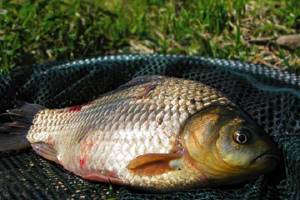
In early spring, crucian carp can also be caught - if you accurately find the place where it stands on the pond or gathers in rivers and reservoirs before migrations. At this time, the silverfish eats little; small winter baits - bloodworms or maggots - will most likely work. As the water warms and the run begins, it is better to fish with larger animal baits - a worm in a bunch or in a sandwich with maggots (casters, kicks). At the end of April-May, it is already worth experimenting with barley, corn, mash or mastyrka, cookies, foam flavored blendes (in the current), as well as with various dips and attractants. Read more about catching crucian carp in the spring.
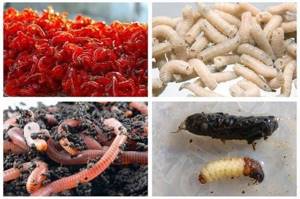
There is only one rule - you should never rely on one bait, except in cases where it is known for certain that it is in this place that, from year to year, the silverfish takes better on a particular bait. When fishing for crucian carp, it is important to experiment with different baits and their aromas, as well as the method of presentation. Often in the spring, crucian carp may not take at all on a stationary bait, but, for example, on the play of a summer jig, a simple twitching and moving of the equipment or the movement of a worm with foam plastic in the current above the bottom will bite perfectly.

Lures for crucian carp in spring
The best bait for crucian carp not only in spring, but always in general, is a red dung worm. In the warm season, constantly using worms is simply too small. In feeding ponds, when the silverback is full (in summer), it may not take worms, since in principle it is not hungry. Here, for this gourmet, you need to choose something else, experiment with aromatics. Any worms are suitable - dung beetles, crawlers, subfoliates, artificially bred dendrobens or Californian ones.
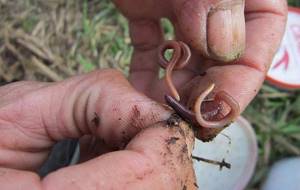
However, more often crucian carp are attracted to the dung worm because of the special yellow discharge with a specific smell. In addition to worms, when fishing you need to take any animal bait that is available. The easiest way is to get maggots or bloodworms. Read more about lures for crucian carp in a separate article; here we will look at baits and lures that work best in the spring. General article about baits for crucian carp.
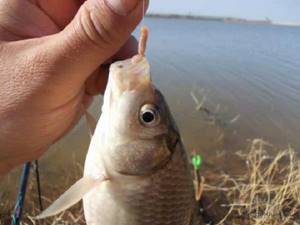
Baits
In early spring, in April and until the warming period in May, we focus more on animal bait. In cold water, crucian carp are of little interest in plant foods. Fish looks for protein, easily digestible objects. Natural food in reservoirs is bloodworms (before the mosquito flies), caddis flies, any larvae and small organisms. Large crucian carp even grabs fry. At the same time, the silverfish cannot eat much - the water temperature is still low and its metabolism is slow.
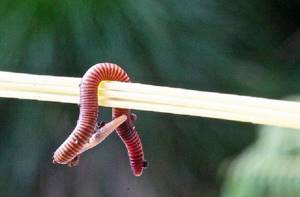
In different bodies of water and even between schools, the diet and preferences of crucian carp differ. One flock can swarm in the mud, selecting larvae. Another scurries among last year's reeds and young sprouting shoots, collecting living creatures from the stems or filtering the remains of mud. Therefore, even with the same bait, you can catch crucian carp in the spring in different ways. One worm can be planted in several ways:
- A small piece on a small hook - in cold water, in March-April.
- Whole or half stocking.
- Punctures in several places - like an accordion.
- 2-3 worms in a bunch (when it’s warmer and the silverfish bites well).
- 1-2 worms in short 1-2 cm segments, pierced through the middle until the hook is full.

In the spring, there is no better bait for crucian carp other than a worm - you need to experiment not only with the type, but also with the method of baiting. The second current and generally available attachment is maggot. Large maggots, small ones (pinka), dead ones (inflated, drowned or boiled) - we try everything in different mounting options, including sandwiches with a worm. Very early in the spring bloodworms also work. However, later, with the activation of small fish, it becomes almost impossible to catch it. Until the bite stabilizes at the end of April-May, we work with animal baits. For dips, we try garlic and anise; fruit aromas don’t work yet. The main fishing tools are donks from the shore and boats, a feeder, a float rod in various versions.
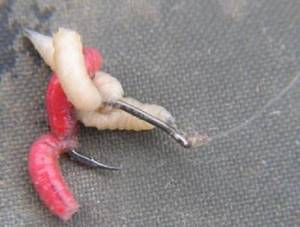
The river hybrid in the south becomes active earlier. It gathers in flocks at the mouths of tributaries of reservoirs and large rivers while still under the ice, in February - March. In March, the flood is already raging in full swing in the south. If the flood is early, in March, the crucian carp is still in the lower reaches of tributaries or in shallow coastal bays, in the reeds. It is caught during this period, as it should be in early spring, sluggishly, using animal baits. This fish becomes active when the water warms up to 10-12 degrees.
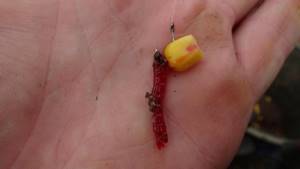
The movement of crucian carp in the south begins in early to mid-April. The flood at this moment has already subsided (sometimes it is just beginning if spring is late), and flocks of silverfish rise up the rivers. Due to the activity at this time in the current, the hybrid can take yellow corn or white foam, more due to their good visibility in the water. Therefore, in the southern regions, even in April, nipples, makushatniks and crucian carp killers with foam can already work. However, it is still better to place the main emphasis on the worm or maggot. Learn more about how to prepare and store worms for crucian carp.
You can try fishing with other animal baits, if they are available:
- Mealworm;
- Larvae of bark beetles and other woodborers;
- Burdock moth larva from Chernobyl stem;
- A small fry 2-3 long, mounted with a stocking like a worm;
- Mormysh;
- Caddisfly larvae.
- Lard (lightly salted, skin-on tenderloin)
- Cheese cubes.
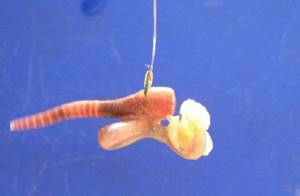
On paid reservoirs in the spring, specialized baits based on fishmeal or with similar odors can be used - boilies and pellets with aromatics of krill, squid (squid), shrimp, crab and others. In some reservoirs and ponds, silverfish in the spring (and autumn) readily respond to kitekat, pedegri cat or dog food granules, with the smell of fish or chicken. Soft pieces can be attached directly to the hook (on a fishing rod or close casting with bottom tackle). Solid ones are drilled and mounted on a hair rig, like boilies, or tied with thread for regular baiting (like micro boilies).
With further warming, plant baits begin to work. In warm water, the distribution and sensitivity of odors increases significantly, and here crucian carp struggle begins to select the right aromatics in the bait or dips for baits.
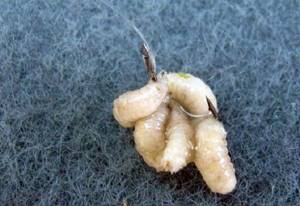
Errors in preparing bait
Homemade bait for crucian carp, if the fisherman is inexperienced, is replete with errors in preparation and use, which can reduce the efficiency of feeding, and therefore the final result of fishing. To prevent some common mistakes, we will focus on these factors, reducing their likelihood during the preparation and use of the product.
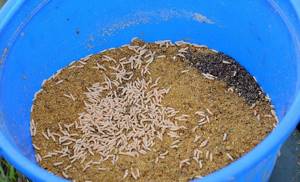
Adding bait of animal origin will increase the chances of success
So, what are the most common mistakes made:
- The density of the mixture is achieved by adding a certain amount of water. A small amount of liquid makes the mixed mixture excessively crumbly and, once in the water, such a composition does not reach the bottom at the feeding point, but is carried away by the current to the side, collecting fish there, outside the supply zone of the main bait. Overmoistening, on the contrary, prevents crumbling after hitting the bottom, which makes the feeding table small in area, and this factor is ignored by large fish and attracts only small things.
- Bait for large crucian carp should also include large fractions in the form of whole grain, worms and maggots. An overabundance of balls will not add success to the fishing, but the size of an individual component of the food will incredibly arouse the interest of trophy fish.
- In cold water, the use of animal baits and their presence in mixtures is more effective. In warm waters, plant components of bait and feed are a priority.
- The presence of an attractant in the feeding mix should be barely noticeable by smell and should not greatly dominate the natural odors of the base, additives and diluents. In cold water, it is better to avoid the use of attractants altogether .
- It is also unacceptable to use several persistent and sharp tastes at the same time; this may even scare away the crucian carp.
- Excessive addition of milk powder can cause the formation of thick and cloudy spots that collect only fines at the fishing point.
Taking into account the above facts, the angler will be able to prepare food that is optimal in its functionality.
Nozzles
The right bait for catching crucian carp in the spring is the one that you managed to guess or choose and correctly offer to the silver gourmet. Already from mid-April you can start trying to use plant baits. There is no best and most universal one - the tastes of the hybrid are different in each body of water. In addition to using the specific bait itself, in the spring we experiment with any sandwiches, adding pieces of worms or maggots to the presentation.
- Whole grains - canned corn, steamed peas, wheat, pearl barley.
- Dough and crumb of bread with various additives - cottage cheese, halva, fried ground seeds.
- Semolina chatterboxes.
- Mastyrka made from peas and semolina.
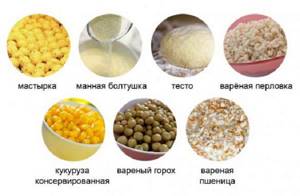
Cereals
The simplest vegetable bait for spring crucian carp is canned sweet corn. A combination of one grain of corn and 2-3 maggots (for large crucian carp) often brings good results. In its pure form, one grain or a pair is planted on the hook. On flat rigs or springs, you can plant corn on hair rigs. In crowded reservoirs, crucian carp are increasingly becoming suspicious of the hooks inside the bait.
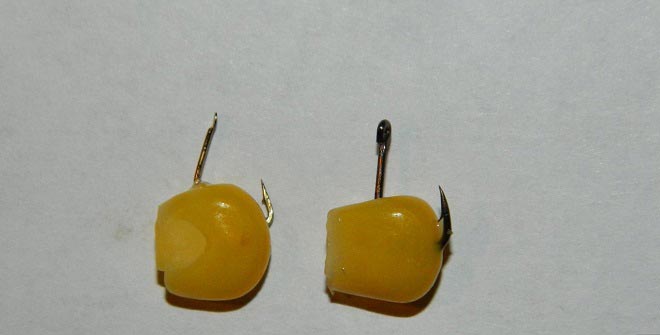
The second important attachment is boiled or steamed pearl barley. When cooking, pearl barley must not be overcooked so that it does not fall apart. 1-4 grains are placed on the hook. This bait can be seasoned with garlic, anise, fried seeds - any flavor that the fish likes in this place. In addition to pearl barley, in the spring you can also use steamed wheat or star pasta. Can be used on any gear - fishing rods, donks, feeders. Learn more about how to prepare pearl barley for crucian carp.
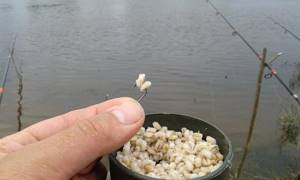
Dough and bread
The classic ancient vegetable bait for crucian carp is black bread mixed with makha or halva. Crucian carp will not bypass such a sweet and aromatic pellet even in the spring. Ordinary dough also works - with water, yolk, with the addition of honey and other aromas (more on aromatics later). Usually the bread begins to work at the end of April, but it is better to catch it in May, as well as in the summer for well-fed crucian carp, when it does not take the worm or the small thing simply does not allow the dung beetle to wait for the approach of the silver fat man. Just the aroma of black crumb, flavored with halva and natural cottage cheese, as well as its sweet taste, can tempt a well-fed silver gourmet to try such an exquisite delicacy.
Chatterbox in a syringe
The Internet is full of recipes for making crucian carp mash from semolina. The essence of this DIY bait is the same - during the stirring process, gluten is released from the grain, and the mass ends up being so sticky and at the same time liquid that it can be stored in a syringe. To attach it to the hook, the talker is squeezed out of the syringe and wound in the form of a lump. Chatter can be made with various flavors. For crucian carp, as already mentioned, in the spring anise or garlic often works. In warm water you can experiment with sweet aromas - cinnamon, vanilla, honey. To catch crucian carp with a chatterbox, float tackle is more often used, since when casting a donkey long distance, this soft bait will fly off the hook.
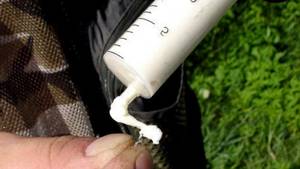
Mastyrka
A nozzle with a denser consistency is a mastyrka. When kneading, add flour or pea mixture to the semolina. Like dough, you can add cottage cheese or halva to mastyrka - the crucian carp will appreciate it. The mass is kneaded with your hands for a long time until the desired consistency is obtained and flavored. Rolled balls are placed on the hook, like dough or bread. In some southern areas, mastyrka is considered the best bait for crucian carp, not only in the spring, but at any time of the year. Read more about making mastyrka for crucian carp.
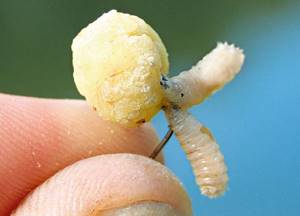
Recipes for 7 popular plant baits
1. Bait made from crackers, flour and cookies.
Make a mixture of ground breadcrumbs (1 part), oil seed cake and crumbly vanilla cookies (0.5 part each). Add steamed wheat and semolina (1 part each). Season with garlic, vanilla or cinnamon. Sometimes ground dill seeds and cocoa are added.
2. Semolina with coconut.
Boil thick semolina porridge, add coconut essence, yellow food coloring and cocoa powder for flavor. Leave for 2 hours in the refrigerator.
3. Semolina dough.
Tie semolina (1.5-2 tablespoons) into a cotton napkin (handkerchief) and place in water for 4-5 hours. Every 30 min. Gently squeeze out the starch and change the water 4-5 times. Add vanilla to the finished mixture for flavor, mash and rinse again..
4. Mamaliga recipe.
Corn grits and wheat flour are fried separately in a dry frying pan. The cereal is then soaked for 2 hours. The flour is diluted with water, combined with the cereal and added for flavor with honey, vanilla, cinnamon or unrefined sunflower oil. Then the thick mass is placed in a double plastic bag and left for 30 minutes. cook in boiling water.
Read: How to properly feed crucian carp
5. Boiled corn
Soak corn kernels for 2-3 days. Then drain the water, rinse the grain and cook for 2 hours with the addition of honey or sugar. After cooking, do not drain the water until it cools down.
6. Semolina chatter.
Pour one third of a glass of cold water into the semolina (0.5 cup) 3 times (after absorption and without stirring). Leave for 20 minutes, then stir by hand with the end of a spoon for 20 minutes. The finished mixture is placed in a syringe and squeezed out, winding it around a hook.
7. Barley.
First method: Pour water (1:3) into the pearl barley and cook until the water boils away. Then add honey or crushed roasted sunflower seeds.
Second method: Steam the cereal in a thermos overnight, flavor it in the morning, removing excess water.
What popular baits are used to catch crucian carp in summer?
Crucian carp have a sensitive sense of smell, so summer baits, the same as in spring, are made with a pronounced aroma. In addition, this fish will be attracted by a bright visible bait with the addition of yellow dye or steamed corn kernels. Large crucian carp prefer these grains, along with peas and pearl barley, although they take bait from mastyrka, semolina, crumb and dough.
Also in summer, bites are guaranteed with a “pellet” jig, on which a worm or maggot is attached.
Jigs
One of the effective ways of fishing for spring crucian carp is fishing with a side nod on a summer jig, long light fishing rods from the shore or a boat. From the side of a boat in clear water, you can also use winter fishing rods, however, for searching for silverfish in the windows (including wading in waders or OZK), light fly fishing rods are more convenient. You can use large, heavy winter jigs or special summer ones - with large hooks for a worm. Sometimes crucian carp take a naked jig in the spring, during periods of famine. However, in the spring it is still better to put a worm or maggot on the hook. Playing for crucian carp - sluggish twitching, tapping and moving at the bottom, slow lowering from a height of 50-70 cm. An article about catching crucian carp with a side nod.
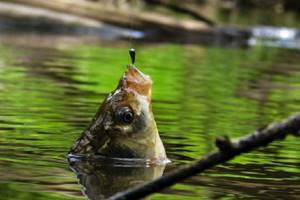
Artificial and floating baits
With the beginning of the spring movement of crucian carp and its feeding, the entire arsenal of gear begins to work. These are all variants of donks, including plugs, nipples, makushatniks and crucian carp killers, as well as any types of fishing rods and feeders. Even spinning anglers sometimes catch large silver crucian carp in the spring using a microjig or small spinners. Spring is the best time to catch silver glutton, especially in the pre-spawning period and after spawning.

Pop-up on hair
In ponds in the spring, you can fish with a flat feeder and regular equipment using boilies, floating or sinking, as well as pellets. Such baits work better in reservoirs where fish are fed. On ordinary natural ponds in the spring it is better to start fishing with worms, maggots, corn or pearl barley.
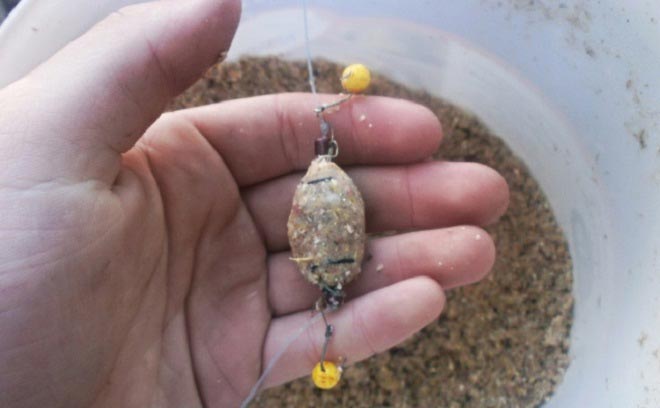
On rigs with springs and bottom killers of crucian carp, foam works well. On “nipple-like” rigs, the hook is simply equipped with a foam ball. The main attracting factor in such gear is a feeder filled with porridge. The fish comes up and sucks the bait, and hooks on short leashes (5-7 cm) fall into its mouth. In rivers in the spring, silverfish often attacks polystyrene foam itself - as a small colored, also aromatized, irritant. You can attach a worm, maggot or pearl barley to the hook along with the foam.
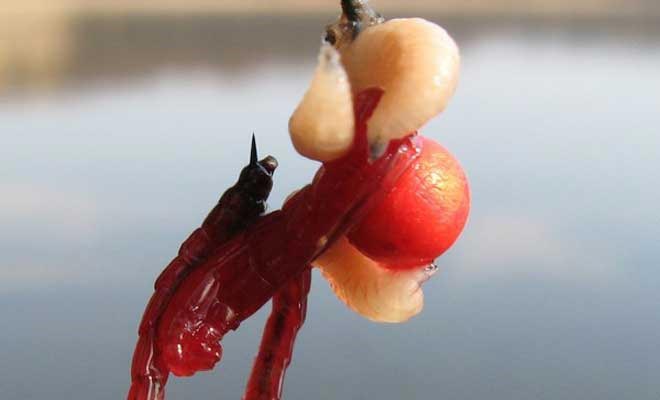
Foam plastic for crucian carp is also used on long leashes in a feeder or conventional bottom rigs, when during the current it is necessary to lift the bait from the bottom. A hybrid, like bream or roach, at the end of spring often takes not from the bottom, but in the thickness, especially when moving along rivers in April and May.

Ottomans, cookies
In recent years, a bait called “Puff”, or, in our opinion, ottomans, has proven itself. Ottomans are a type of floating boilies in a simpler design made from foamed corn dough. In some regions this attachment is also called kuk. Cooks are sold in fishing stores and are several times cheaper than Pop-Up boilies. Ottomans are sold in a variety of scents and sizes. Garlic cook has proven itself to be the best. Working with the equipment is similar to foam plastic - only the cook is not a decoy, but a truly edible attachment.
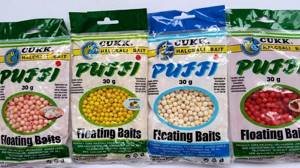
When choosing a size, you need to take into account that when wet, the ottoman increases in size. The ball gets wet in the water, but stays well on the hook. You also need to experiment with cookies in the spring, trying different colors, aromas and hooking a maggot or worm sandwich on the hook. You can also lift corn and pearl barley from the bottom with a cooker, if necessary. You can attach the hook directly to the hook, using a needle on the hair or thread like a mini boilie. In the same way, you can use multi-colored flavored floating corn made of silicone. You can find such bait in any fishing stores or on Aliexpress.

Pop-up on a flat feeder
Choosing bait depending on the season and fishing conditions
An important role is played by the choice of the optimal bait, taking into account the season and various fishing conditions.
Fishing professionals recommend:
- Depending on the time of year:
- in winter Give preference to options that can withstand strong currents and icy water.
Important: crucian carp will not bite on bread, peas or porridge in winter.
For example:
roundworms;
- Mastyrka.
maggots;
- any porridge, especially buckwheat;
- "sandwich";
- dung worms;
- In deep water areas, use animal or artificial options, for example: earthworms;
- canned corn;
Advice: if fishing from a boat, then give preference to slugs, especially on hot days or after rains.
Dips and attractants for spring crucian carp
On an unfamiliar body of water, you don’t know in advance what smells and aromas crucian carp like in the spring here. The general trend is the same - in early spring, in cold water, we try flavors extremely carefully. In warm water, be bolder. However, in both cases we do not get our hands dirty and do not use dips in bait unless we know for sure that the crucian carp reacts positively to this smell here. An unsuccessful flavoring can not only fail to attract, but also scare the silver glutton. Gently spray the nozzle or immerse it in a container with flavoring. In different places in the spring, strange, sometimes not at all fishing, aromas can work:
- Garlic and anise in baits for crucian carp in spring are classics of the genre;
- Cake, flour, ground roasted seeds (especially in the south);
- WD-40;
- Valerian tincture;
- Corvalol;
- Kerosene;
- Vietnamese star (ointment for runny nose);
- Any fishing flavors - fennel, dill, coriander, cinnamon, black pepper, vanilla, tutti-frutti, strawberry, honey and others.
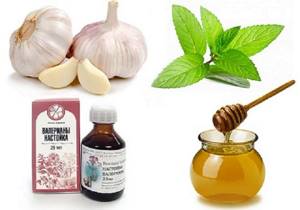
Spring bait
Aroma, baits and groundbait are inextricably linked. Together they form the connection that works (or doesn’t work) on the silver glutton. In early spring, bait with the wrong aroma can scare away crucian carp. Therefore, we first fish using the search method to find fish, and then, if necessary, we begin to slowly feed them with natural ingredients. We use bright aromatic food with a large feed fraction (pearl barley, millet) after the weather warms up and the bite has stabilized. For nipples, plugs and springs for flow we make plasticine based on peas, semolina or porridge. We select the aroma individually, taking into account the specifics of the reservoir. In places where the hybrid is constantly present, it can be planted for bait, feeding the point several days in advance 2-3 times with grains or worms at the same time. Read more about proper feeding for crucian carp in spring
Subscribe to the channel:
YouTube channel RYBAFAN
We are VKontakte
Recipes for baiting crucian carp: a step-by-step process
There is an excellent bait recipe that will ensure a successful catch, but only if the place has been chosen correctly.
Stage 1
Lure
Fill the pan with water and boil. As soon as the water boils, you should add 2 tea mugs of millet, 1 mug of semolina and pearl barley. The water must be drained so that it rises 1 cm above the grain. Next, it is important to cook everything.
After half an hour, the water must be drained through a sieve. After the bait has cooled, you need to add certain ingredients: 1 cup of breadcrumbs and the same amount of sunflower cake.
Stage 2
For taste, you need to add flavorings or add 1-2 cups of purchased flavored bait. It is necessary to use either flavorings or cereals to add a smell, since if you use both methods, you will get excessive aromatization, which will only scare away the fish.
